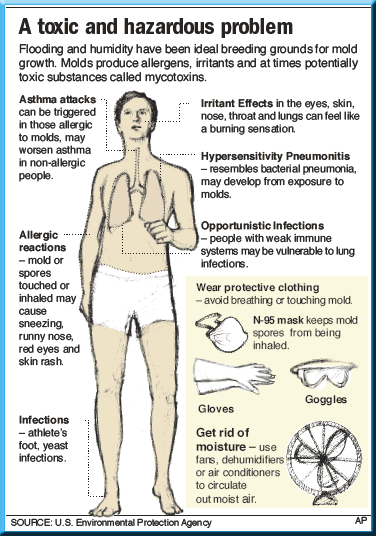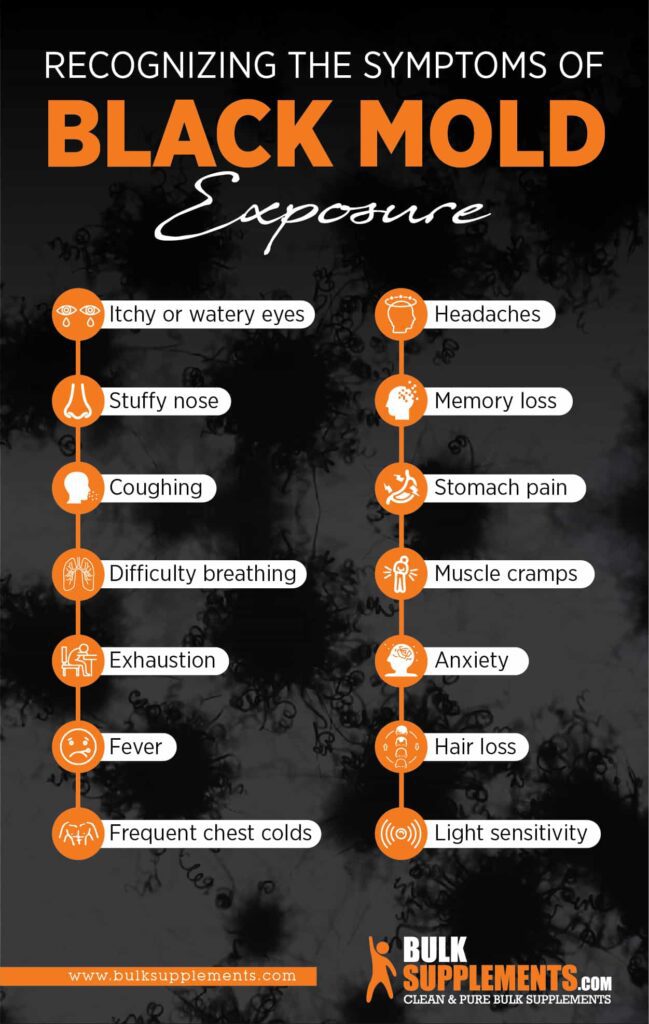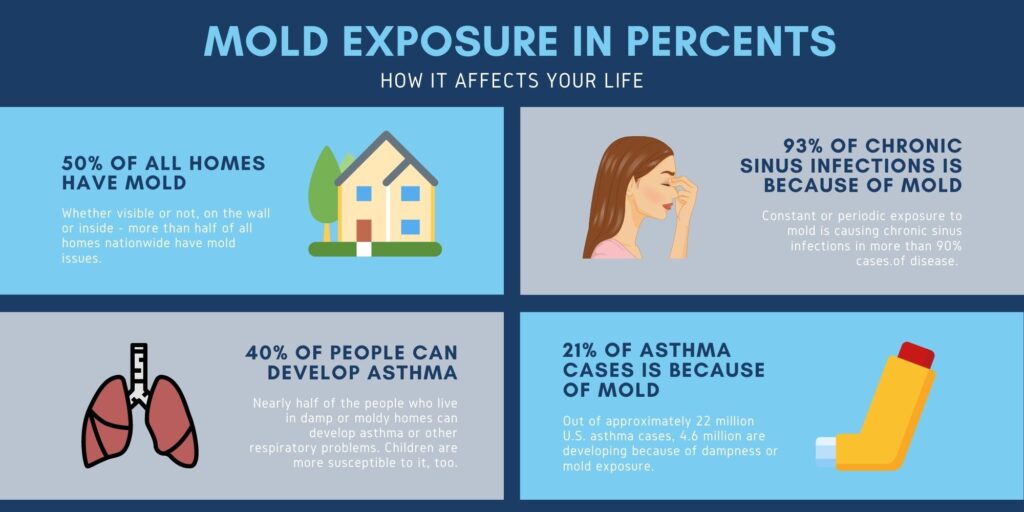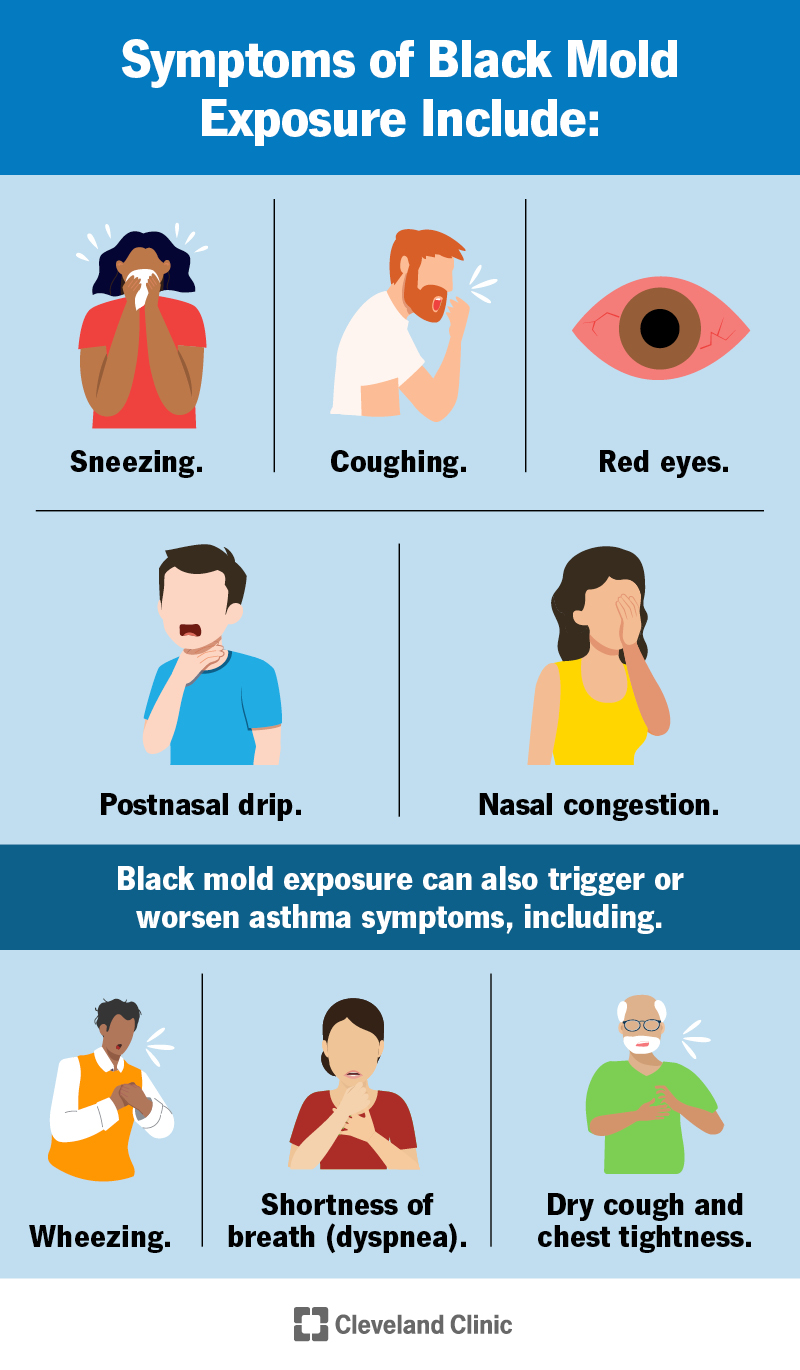In this article, we will discuss the physical symptoms of black mold exposure and how they can affect your body. It is important to be able to recognize these symptoms in order to take appropriate action to protect your health. We will cover common symptoms such as respiratory issues, allergic reactions, and skin irritations. By understanding the effects of black mold on your body, you can better prevent and address any potential health concerns.
What is black mold?
Definition of black mold
Black mold, also known as Stachybotrys chartarum, is a type of fungus that thrives in damp or humid environments. It is characterized by its black or dark greenish color and slimy texture. Black mold can grow on various surfaces, including walls, ceilings, carpets, and household items. It releases spores into the air, which can be detrimental to human health when inhaled or touched.
Types of black mold
There are different types of black mold, including Stachybotrys chartarum, Aspergillus niger, and Cladosporium. Stachybotrys chartarum is the most common and notorious type of black mold. It produces mycotoxins, which can cause severe health issues in individuals exposed to it. Aspergillus niger and Cladosporium are also harmful molds that can cause respiratory problems and allergic reactions.
Causes of black mold exposure
Moisture and humidity
Black mold thrives in damp environments with high humidity levels. It commonly grows in areas where moisture is present, such as bathrooms, basements, and kitchens. Leaking pipes, condensation, or water damage can create the ideal conditions for black mold to grow and spread.
Poor ventilation
Insufficient airflow and ventilation can contribute to the growth of black mold. When there is stagnant air, moisture can accumulate, creating a suitable environment for mold growth. Poorly ventilated areas, such as closed-off rooms or spaces with limited air circulation, can exacerbate the problem.
Leaking pipes or roofs
Water leaks from pipes or roofs can lead to moisture intrusion, promoting the growth of black mold. These leaks may go unnoticed for an extended period, allowing mold to spread within walls, ceilings, or other hidden areas. Regular inspection and timely repair of any leaks are crucial in preventing black mold growth.

Signs and symptoms of black mold exposure
Exposure to black mold can have a range of physical symptoms, which can vary depending on the individual and the extent of exposure. It is important to recognize these symptoms to seek necessary medical attention and prevent further health complications.
Respiratory symptoms
One of the most common effects of black mold exposure is respiratory symptoms. These may include:
Coughing
Persistent coughing can be a result of inhaling mold spores. The presence of black mold in the air can irritate the respiratory system, leading to frequent coughing fits.
Wheezing
Difficulty breathing and wheezing are common symptoms associated with mold exposure. The inflammation caused by mold spores can narrow the airways, making it harder for air to pass through.
Shortness of breath
Feeling out of breath or experiencing difficulty breathing, especially in enclosed spaces or areas with visible mold growth, could be a sign of black mold exposure.
Sore throat
A persistent, scratchy, or sore throat can be a result of inhaling mold spores. If you notice a sore throat that doesn’t go away, it’s important to consider the possibility of black mold exposure.
Skin symptoms
In addition to respiratory symptoms, black mold exposure can also affect the skin. These symptoms may include:
Rashes
Contact with black mold or its spores can cause rashes or skin irritation. These rashes may appear red and itchy, and can occur in small patches or cover larger areas of the skin.
Itchy skin
Excessive itching without any evident cause can be a sign of black mold exposure. Itchy skin may occur due to an allergic reaction to mold spores.
Redness
Redness on the skin, particularly in areas that have come into direct contact with black mold, should not be ignored. It may indicate an inflammatory response to mold spores.
Dry or flaky skin
Exposure to black mold can cause dryness and flakiness of the skin. This can result in discomfort and a constant urge to moisturize the affected areas.
Allergic reactions
People with allergies are particularly susceptible to allergic reactions from black mold exposure. Common allergic symptoms include:
Sneezing
Excessive sneezing, especially in environments where black mold is present, can be a sign of an allergic reaction to mold spores.
Runny or stuffy nose
Inflamed nasal passages may lead to a runny or stuffy nose. This can be a reaction to the presence of black mold spores in the air.
Watery eyes
Watery or teary eyes can result from exposure to mold spores. The eyes may become red, itchy, or irritated.
Itchy eyes
Persistent itching or discomfort in the eyes can be caused by an allergic reaction to black mold. This symptom may occur in conjunction with other allergy-related symptoms.
Neurological symptoms
Black mold exposure can also affect the nervous system, leading to various neurological symptoms. These may include:
Headaches
Frequent or persistent headaches can be a result of black mold exposure. Mold toxins can trigger inflammation and irritation, leading to headaches or migraines.
Memory problems
Difficulty remembering things or experiencing memory loss can be attributed to black mold exposure. The toxins released by black mold can affect cognitive function and memory retention.
Difficulty concentrating
Exposure to black mold can impair concentration and focus. If you find it increasingly challenging to concentrate, especially in areas where mold growth is evident, it may be due to mold exposure.
Dizziness
Feeling lightheaded, dizzy, or experiencing vertigo can stem from black mold exposure. It is important to take these symptoms seriously and seek medical attention if they persist.

Seeking medical help
When to see a doctor
If you suspect black mold exposure and experience persistent or worsening symptoms, it is important to seek medical help. This is particularly crucial if you have pre-existing respiratory conditions, allergies, or compromised immune function.
Some signs that indicate the need for medical attention include:
- Severe or prolonged respiratory symptoms
- Skin rashes or irritation that does not improve with over-the-counter treatments
- Allergic reactions that affect daily activities or worsen over time
- Neurological symptoms that impact daily functioning
Your doctor can perform a thorough evaluation and recommend appropriate treatment or further tests to determine the extent of black mold exposure.
Medical tests for black mold exposure
Medical tests to confirm black mold exposure may include:
- Allergy testing: This can help identify specific allergens, including molds, that may be causing allergic reactions.
- Skin prick test: By exposing the skin to a small amount of black mold allergen, this test can determine if one has developed an allergic response.
- Blood tests: Blood tests may be conducted to check for elevated levels of antibodies that indicate an allergic reaction to mold.
- Respiratory function tests: These tests measure lung function and can detect any breathing difficulties associated with black mold exposure.
It is important to consult with a healthcare professional for an accurate diagnosis and appropriate treatment plan.

Preventing black mold exposure
Taking preventive measures is essential to avoid black mold exposure and safeguard your health.
Maintaining proper ventilation
Ensure air circulation by keeping windows open, using fans, or operating air conditioning systems. This can help prevent the accumulation of moisture and reduce the risk of mold growth.
Controlling humidity and moisture
Use dehumidifiers to reduce humidity levels, especially in damp areas such as bathrooms, basements, and laundry rooms. Repair any water leaks promptly and address sources of moisture to prevent mold growth.
Promptly fixing leaks
If you notice leaks from pipes, roofs, or other sources, it is important to address them promptly. Dampness from leaks can lead to mold growth, so it is crucial to fix the issue and dry the affected areas as soon as possible.

Conclusion
Recognizing the physical symptoms of black mold exposure is vital for your well-being. Understanding the causes of black mold growth, knowing the signs and symptoms of exposure, and taking preventive measures can help you protect yourself and your loved ones from the harmful effects of black mold. If you suspect mold exposure or experience persistent symptoms, it is important to consult with a healthcare professional for proper diagnosis and appropriate treatment. By being proactive and vigilant, you can ensure a healthy and mold-free environment for yourself and those around you.
